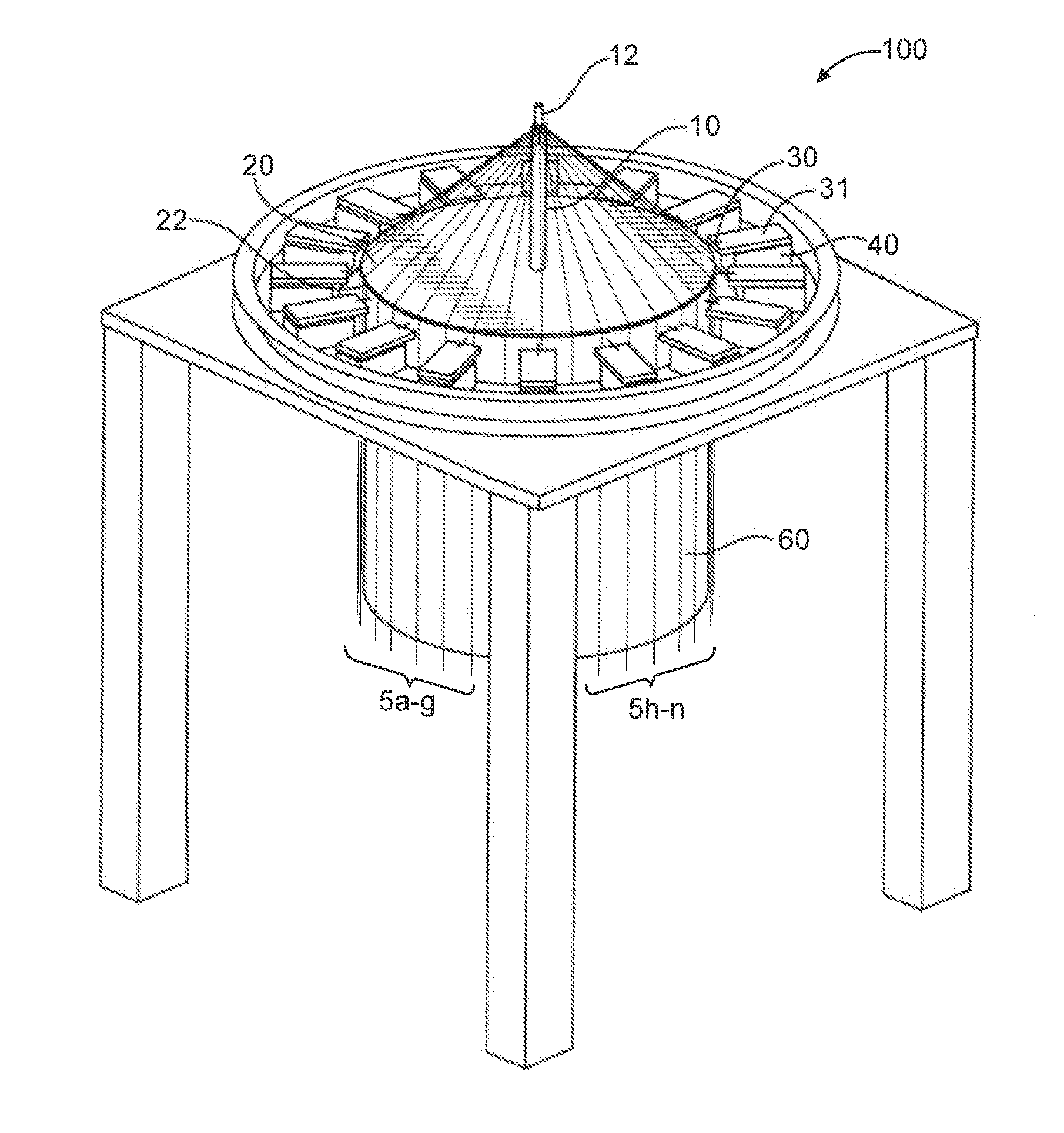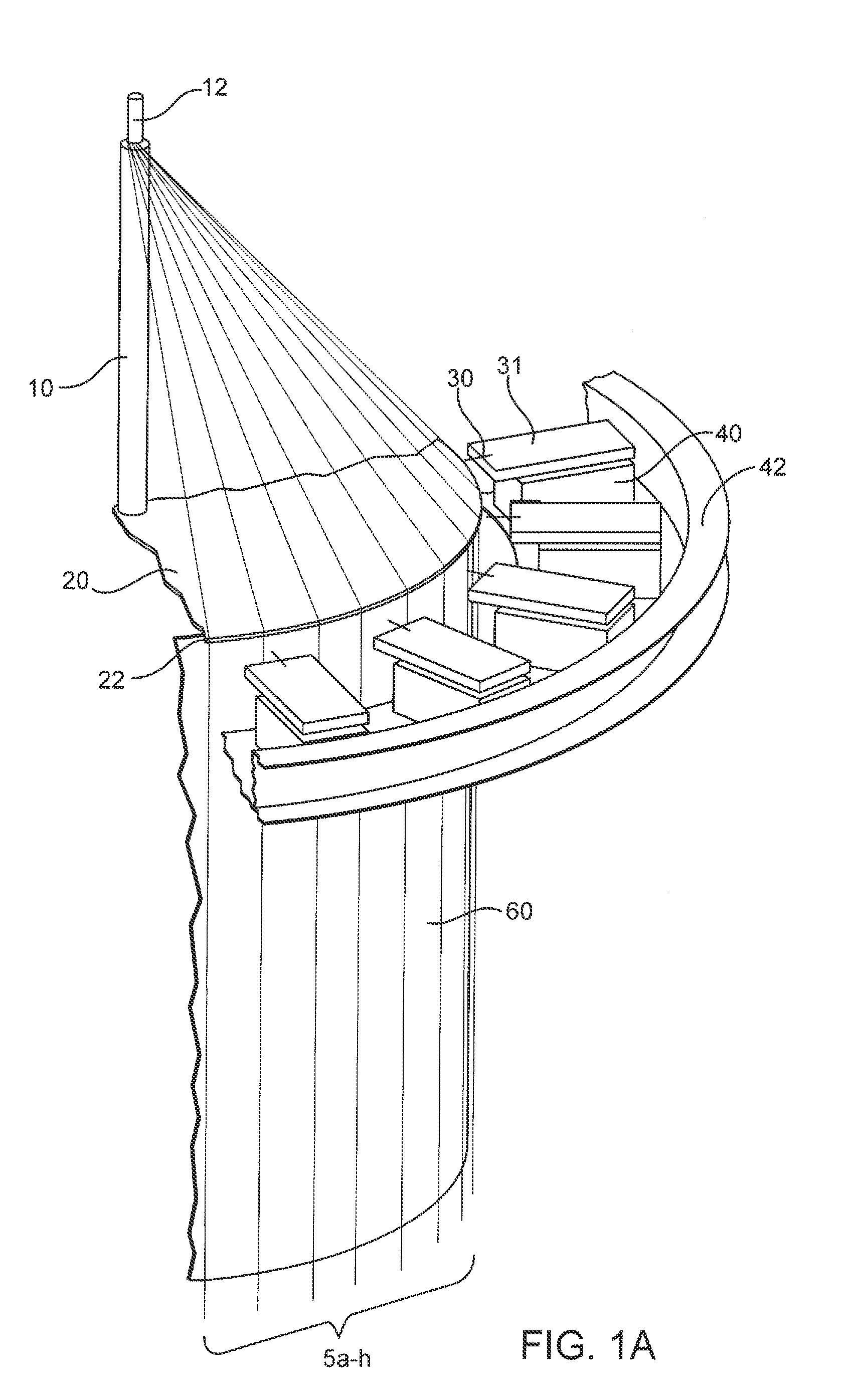Braiding mechanism and methods of use
a tubular braid and braiding mechanism technology, applied in the field of tubular braiding apparatus and methods, can solve the problems of limited speed of these machines, limited type of braiding machines, and inapplicability to most medical applications,
- Summary
- Abstract
- Description
- Claims
- Application Information
AI Technical Summary
Benefits of technology
Problems solved by technology
Method used
Image
Examples
Embodiment Construction
[0071]Discussed herein are devices and methods for creating a tubular braid from a plurality of filaments. Because the braiding machine individually engages a subset of the filaments and moves the engaged filaments relative to the unengaged filaments in discrete steps to interweave the filaments, it does not create the large tension spikes common to the continuous motion braiding machines. Thus, the invention is particularly useful for making braided tubes of ultra-fine filaments, in the order of ½ mil-5 mil, for example, for use in vascular implants, such as embolization devices, stents, filters, grafts, and diverters for implantation in the human body. It will be appreciated, however, that the invention could also be advantageously be used for making braids for other applications and with other sized filaments.
[0072]The ability to individually engage a subset of filaments and move the filaments in discrete steps also allows for both flexibility in the loading of the machine and in...
PUM
 Login to View More
Login to View More Abstract
Description
Claims
Application Information
 Login to View More
Login to View More - R&D
- Intellectual Property
- Life Sciences
- Materials
- Tech Scout
- Unparalleled Data Quality
- Higher Quality Content
- 60% Fewer Hallucinations
Browse by: Latest US Patents, China's latest patents, Technical Efficacy Thesaurus, Application Domain, Technology Topic, Popular Technical Reports.
© 2025 PatSnap. All rights reserved.Legal|Privacy policy|Modern Slavery Act Transparency Statement|Sitemap|About US| Contact US: help@patsnap.com



